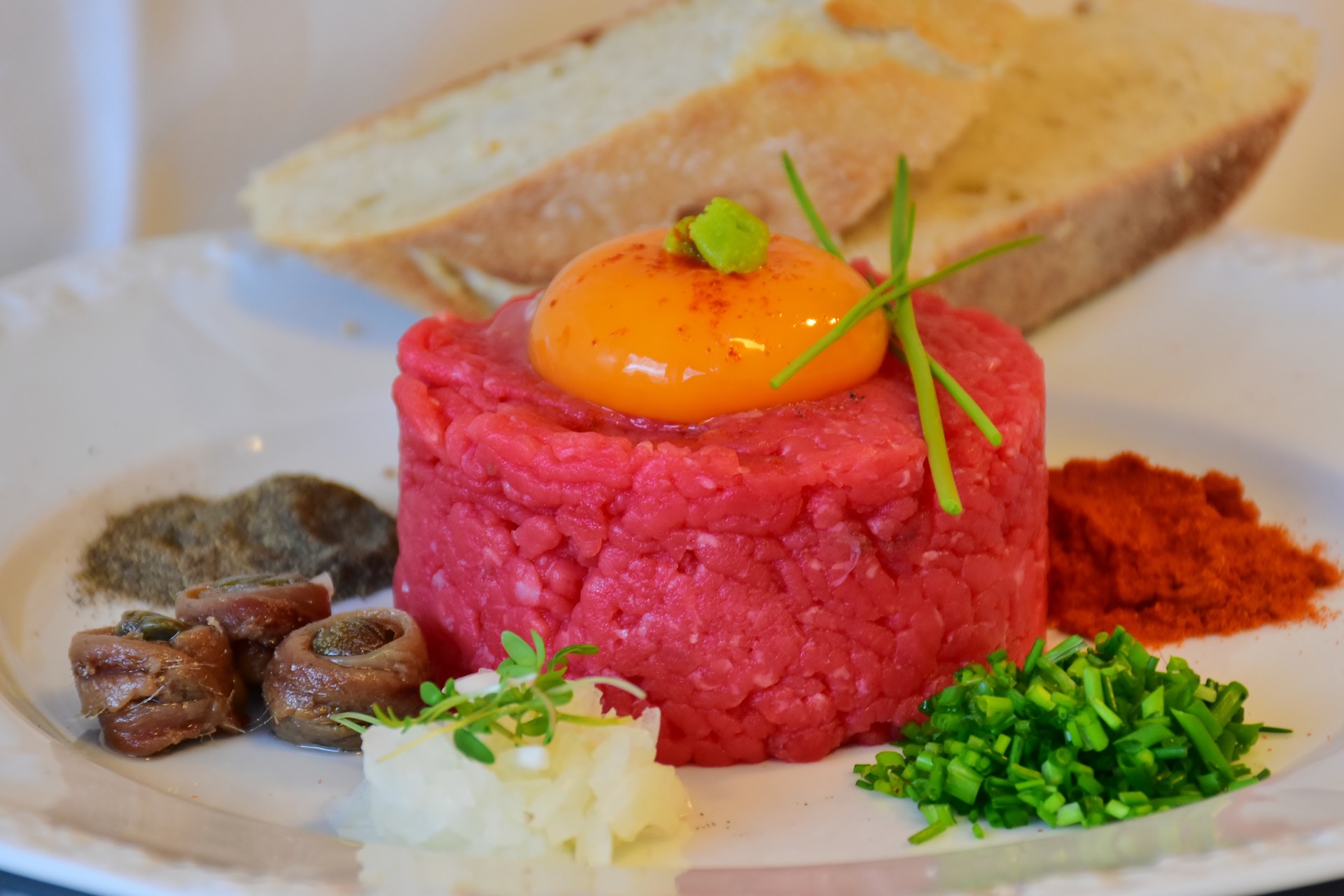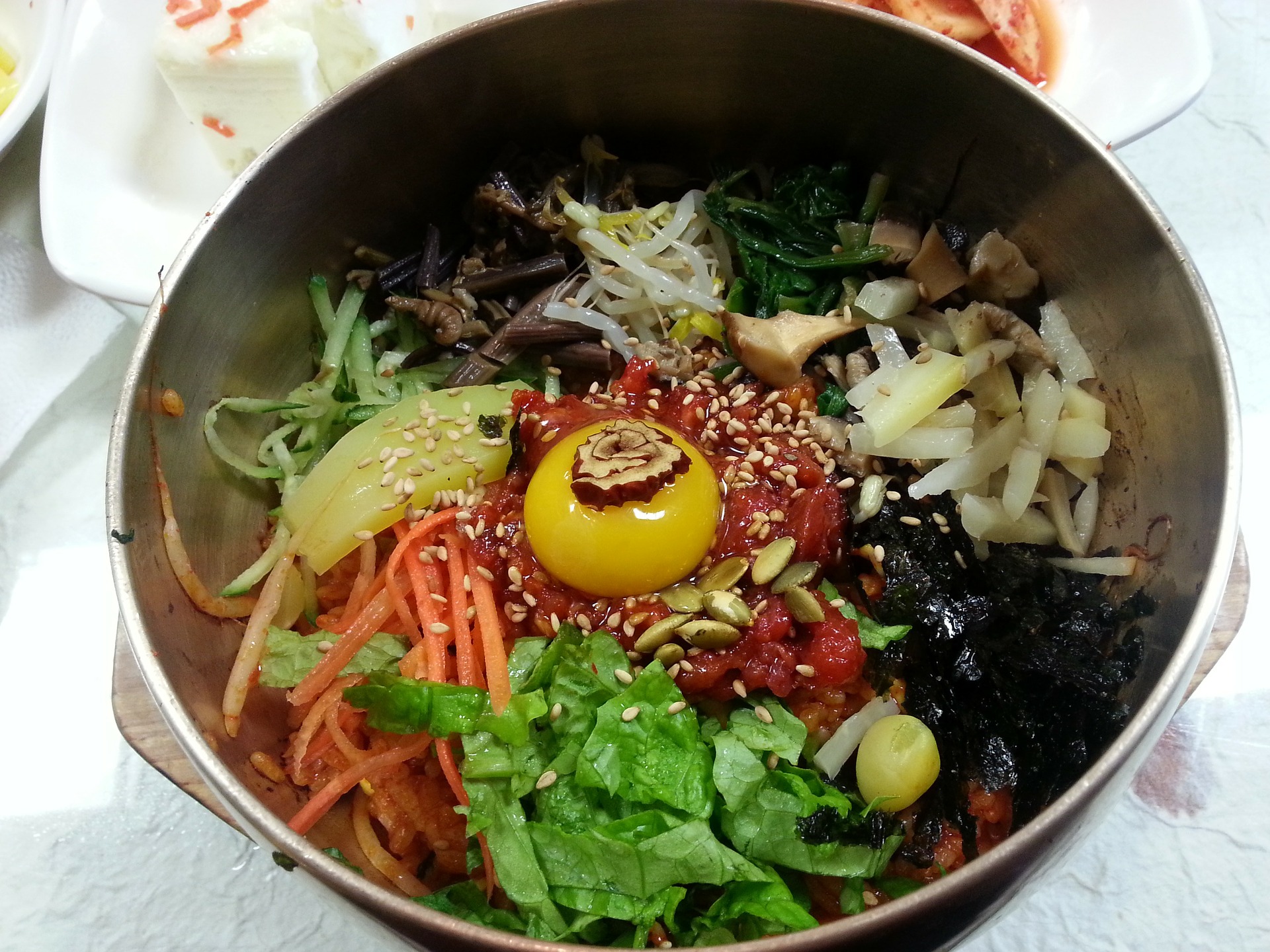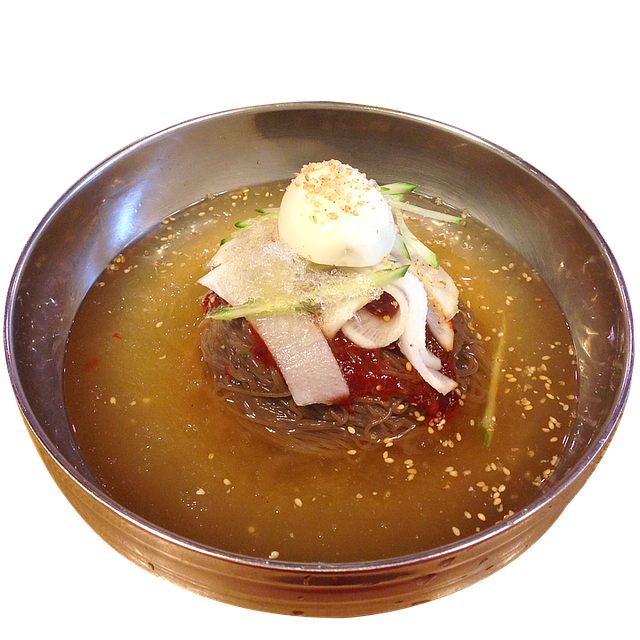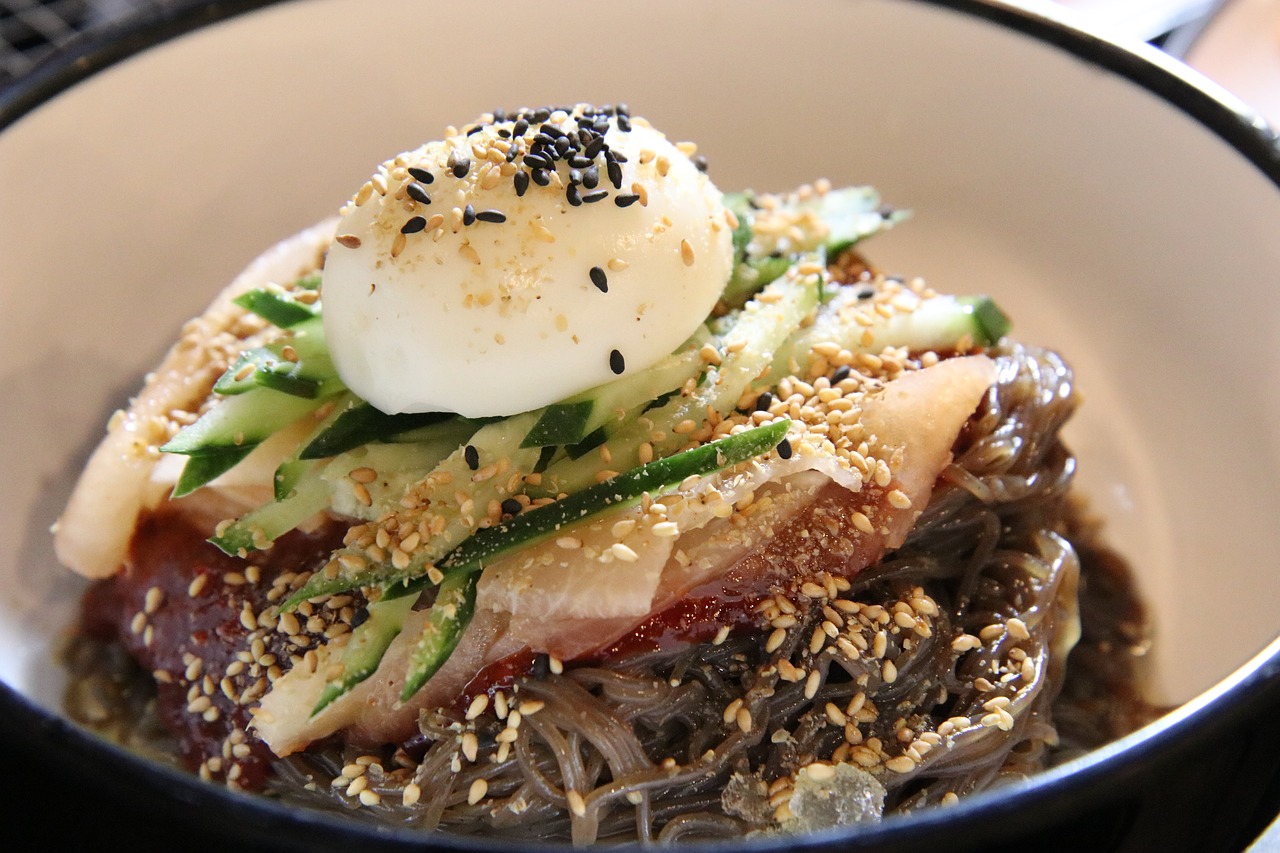Korean Summer Delicacies I Miss the Most (Part 1) Posted by Flying Oyster on Aug 7, 2019 in Uncategorized
I have lately noticed that I crave Korean food more than ever, which surprises me a little. I don’t recall any previous times since I moved abroad when I got crazy about missing Korean food. I am not sure whether my taste buds are changing as I get older (as they say) or the recent personal changes of moving from a wet and colder climate to a hot one has affected my appetite, but my cravings for Korean food is strong enough to give me the urge to write about them. Therefore, I am going to introduce 4 Korean summer delicacies that I probably can’t find for a while.
- 육회 (yuk-hoe: a raw meat Korean dish)
육회 is a raw 고기 (go-gi: meat) dish, which is usually seasoned with 간장 (gahn-jang: soy sauce). If you know what steak tartare is, 육회 is similar to it.
I remember I was about 8 years old when I first tasted 육회 at my grandmother’s birthday party. I was little squeamish to bring red raw meat into my mouth, but the new world had been opened soon after I swallowed the first bite. It was sensational to a little girl that raw cold beef still could taste quite good with julienned pear. In my memory, it was the perfect combination of 단 맛 (danh- maht : sweetness) and 짠 맛 (jjanh-maht: salty flavor) with all those different textures. This dish still pleases my taste buds.
The secret of this delicacy comes from the quality of 신선한 (sin-sun-han: fresh) meat. 홍두깨 살 (hong-doo-kkae-sal: eye of round) is usually used for this dish, but you can use any parts of beef that don’t contain 지방 (ji-bang: fat). A long time ago, my husband and I visited 제주도 (je-joo-doh: Jeju Island in South Korea). We tasted 말회 (mal-hoe :raw horse meat). It was decent, but it was a little chewy for me as far as I remember. Some people are reluctant to eat the raw meat dish because of the risks of getting sick, but I would take a chance as long as I know the meat is fresh and comes from trusted resources.
Koreans enjoy 육회 on top of 비빔밥 (bi-bim-bop: a Korean rice dish with various vegetables and meat). Some people believe that drinking alcohol after eating 육회 can minimize the risks of 식중독 (sik-joong-dok: food poisoning), but I am not quite convinced by that. I will leave it up to your judgment.
- 냉면 (naeng-myen: a cold noodle dish)
My husband is a big fan of Korean food, but there are a few dishes he doesn’t like. One of them is 냉면. His idea of a noodle dish is one that should be served in a hot bowl, but I think he is missing a lot when it comes to Korean food. This delicious cold noodle dish can bring your appetite back in scorching hot summer days.
There are two types of 냉면. First, 물냉면 (mool-naeng-myen: cold broth noodle) has a mild flavor which is served with cold beef broth. 물냉면 can be a plain choice for some of you who are looking for savory, but the secret of 물냉면 is 육수 (yuk-soo: beef broth).
The other one is 비빔냉면 (bi-bim-naeng-myen: spicy cold noodle). This 냉면 doesn’t come with broth and the sauce is spicy. I normally prefer 비빔냉면 because of the spicy sauce, but I choose 물냉면 over 비빔냉면 when I have Korean barbeque. 물냉면 is a fun choice, instead of having a bowl of rice, at a Korean barbeque restaurant.
Do these two dishes sound interesting to you? I will cover two more Korean delicacies in part 2. Stay tuned!

Build vocabulary, practice pronunciation, and more with Transparent Language Online. Available anytime, anywhere, on any device.







